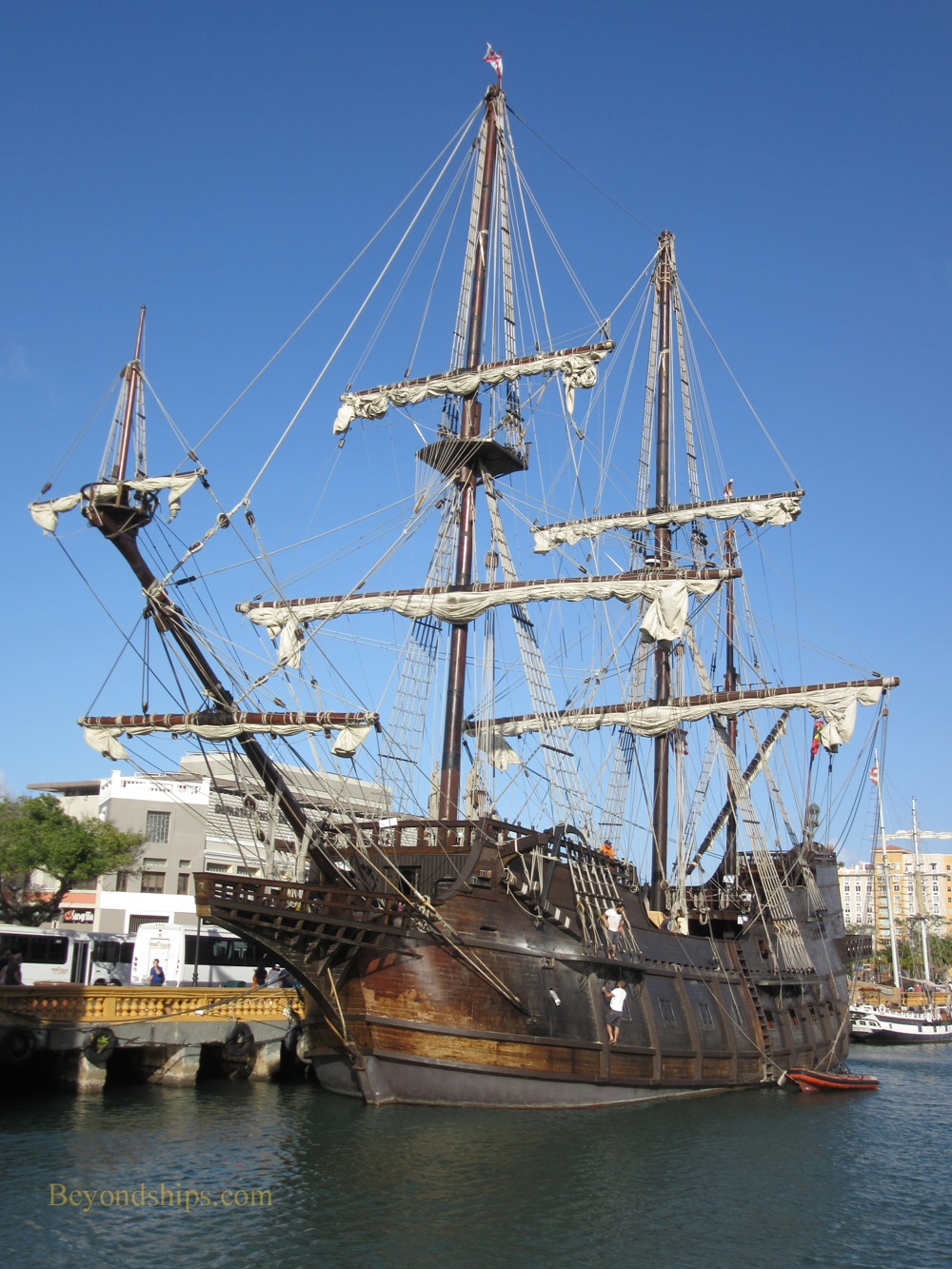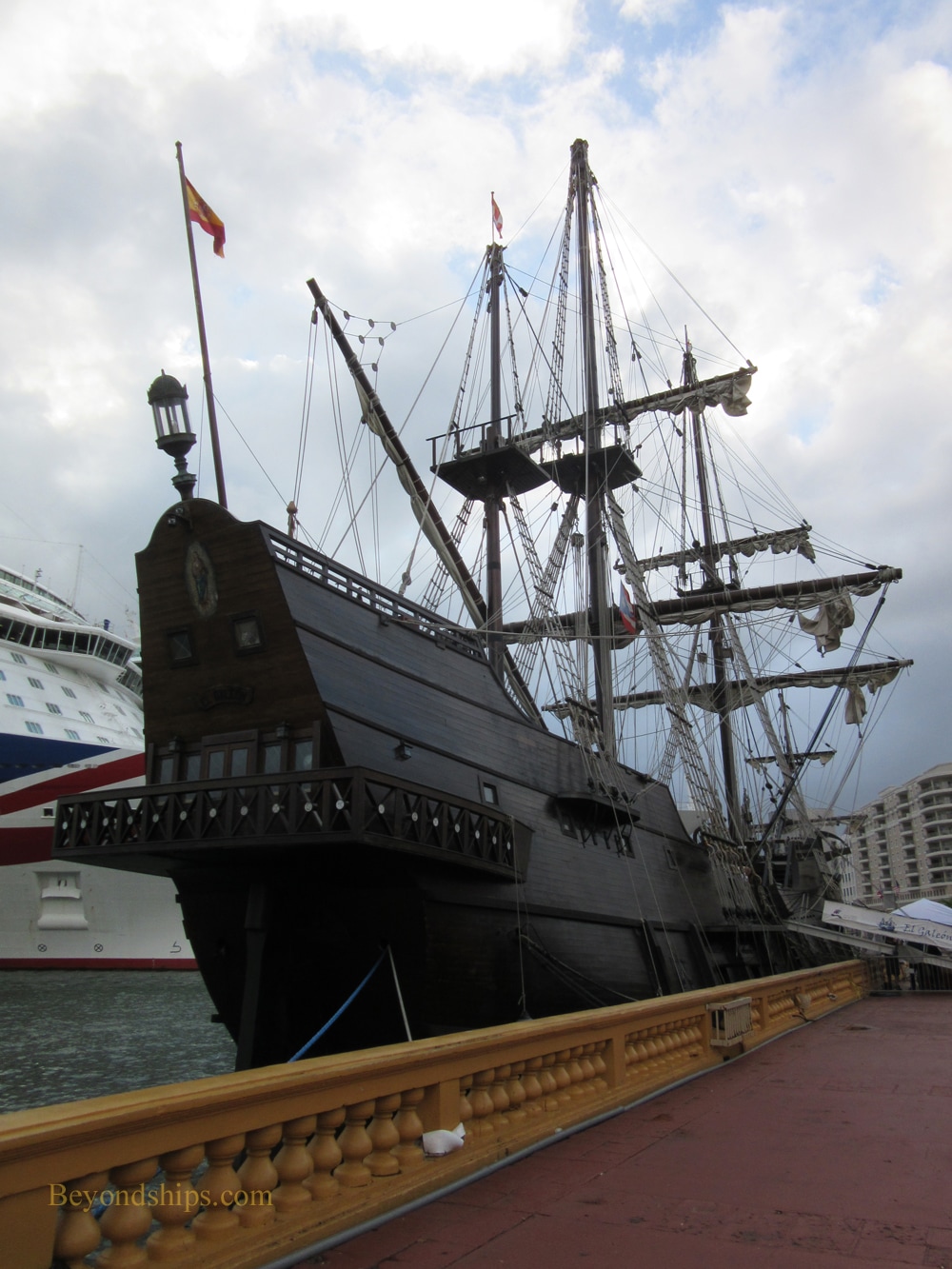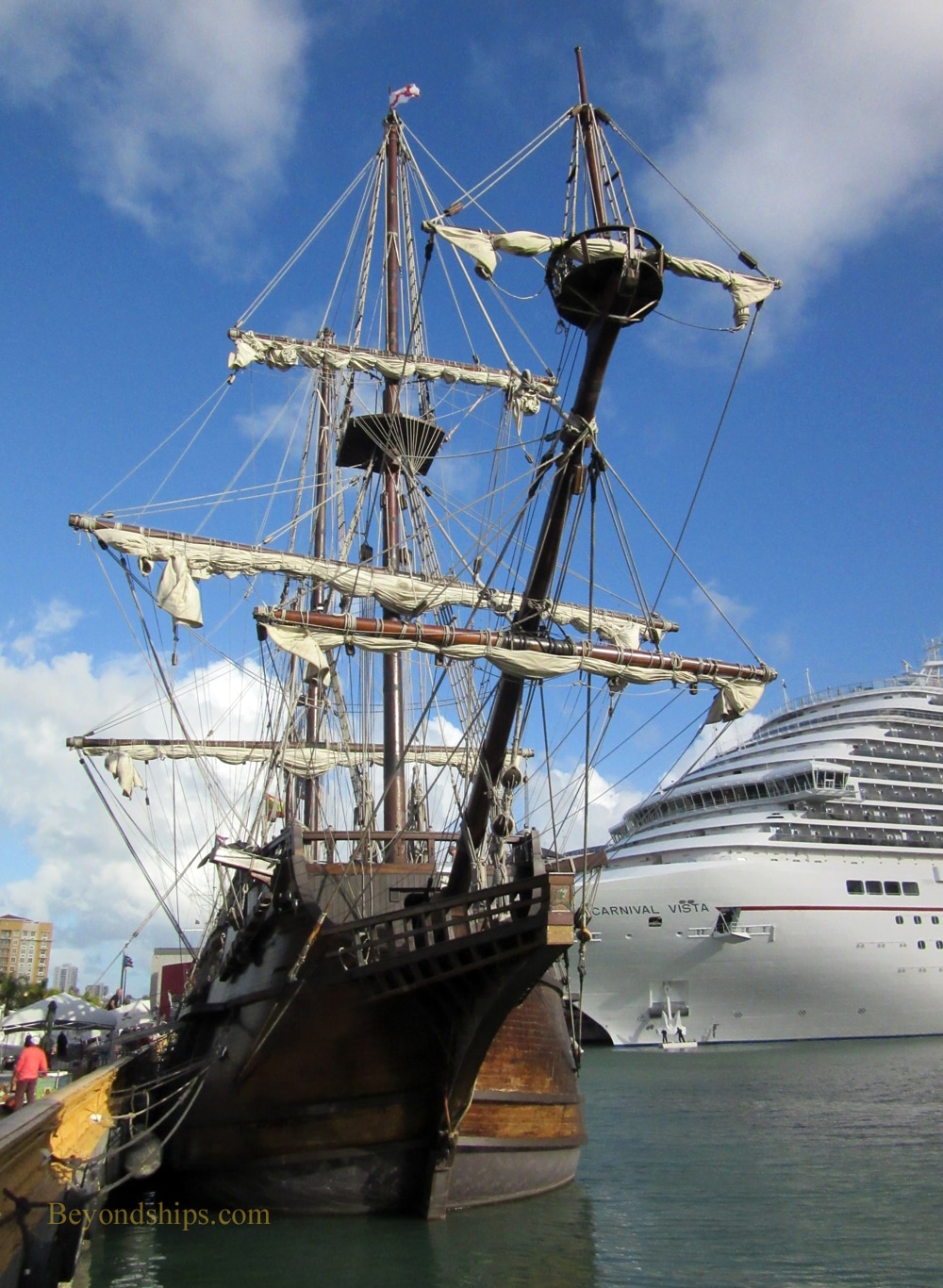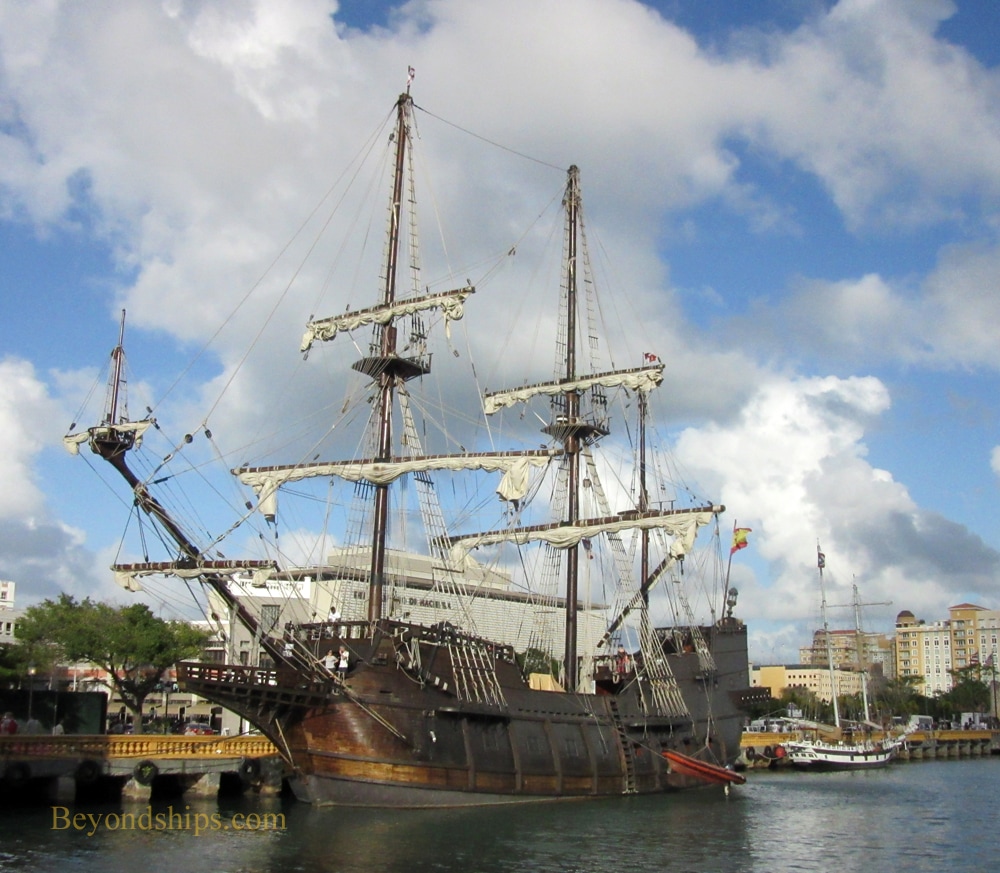|
Exhibition ships
VISITING EL GALEON page one Page One........Introduction, Basic Statistics, Galleons
Page Two....... Inside El Galeon |
|
Introduction
El Galeon Andalucia (usually just referred to as El Galleon) is an exhibition ship recalling one of the most significant periods in maritime history – the Age of Exploration and European expansion into the New World. The ship travels the world, acting as an additional temporary attraction in the ports it visits. Galleons Galleons were the principal type of ship used by Spain for exploration and commerce for three centuries (16th through the 18th centuries). These were small wooden ships ranging in size from 130 to 200 feet in length. The principal trade route began in Spain and ran across the Atlantic, through the Caribbean and terminated in Mexico. Traveling westbound the galleons carried merchandise manufactured in Europe as well as food stuffs grown on European farms. Going east, the ships would carry tobacco, coco and raw materials from the New World. Of course, the galleons are best known for carrying the gold and silver obtained by the Spanish conquistadors. It is estimated that in just the 16th century, the holds of the galleon fleet carried some 17,000 tons of silver and 181 tons of gold back to Spain. In addition to the riches of the New World, the eastbound galleons carried products from Asia such as porcelain, silk and ivories. This is because Spain's Pacific trading route ran from Central America to the Philippines and on to China. Goods obtained in Asia were transshipped across Central America and then put on galleons returning to Spain. Because of their rich cargoes, the galleons were subject to attack. The attackers included the privateers authorized by England and other European powers hostile to Spain. In addition, pirates menaced the galleons for purely private gain. As a result, the galleons had to be armed. They also sometimes sailed in convoys escorted by Spanish naval vessels. Nature also threatened the galleons. Lacking any ability to do long range weather forecasting, avoiding hurricanes and fierce Atlantic gales was mostly a matter of luck for the galleons. Consequently, wrecks of galleons litter the Bahamas, Bermuda and the Azores - - places where today's cruise ships routinely sail without incident. Life at sea for the passengers and crew of the galleons was nothing like life aboard a modern cruise ship. A galleon could carry up to 800 people. A handful of officers had their own private cabins. Everyone else had to sleep on the gun deck, usually on hammocks suspended over the cannons. Each person on a galleon had about 1.8 square yards of habitable space. The officers and crew were male. However, women also traveled as passengers on the galleons on their way to and from the New World. Extramarital sex was a punishable offense. Voyages on the sail-powered galleons took a long time. Water became unfit for human consumption within 30 days and fresh fruit and vegetables quickly spoiled. The primary substance was a cookie-like baked good that often had to be eaten rotten or with worms. The poor diet and lack of hygiene often led to disease. Nonetheless, the galleons were successful ships. They enabled Spain to build and maintain a powerful empire for three centuries. Indeed, these ships were considered so crucial that designers and certain shipyard workers who built these ships were prohibited by law from leaving Spain in an effort to prevent other nations from learning how to build such ships. |
Basic StatisticsClass: Galleon
Builder: Punta Umbria shipyard (Spain) Launched: November 2009 Tonnage: 490 gross tons Length: 164 feet Beam: 33 feet Draught: 10.5 feet Propulsion: 4 masts (10,000 sq. ft. sail) Speed: 7 knots (average) Registry: Spain Crew: 15-35 |
|
|
Click here to continue
See our articles on other historic ships CSS Acadia Cutty Sark HMCS Sackville HMS Belfast Nao Santa Maria Royal Yacht Britannia USS Constitution |
Exhibition ships - Visiting El Galeon - page one



